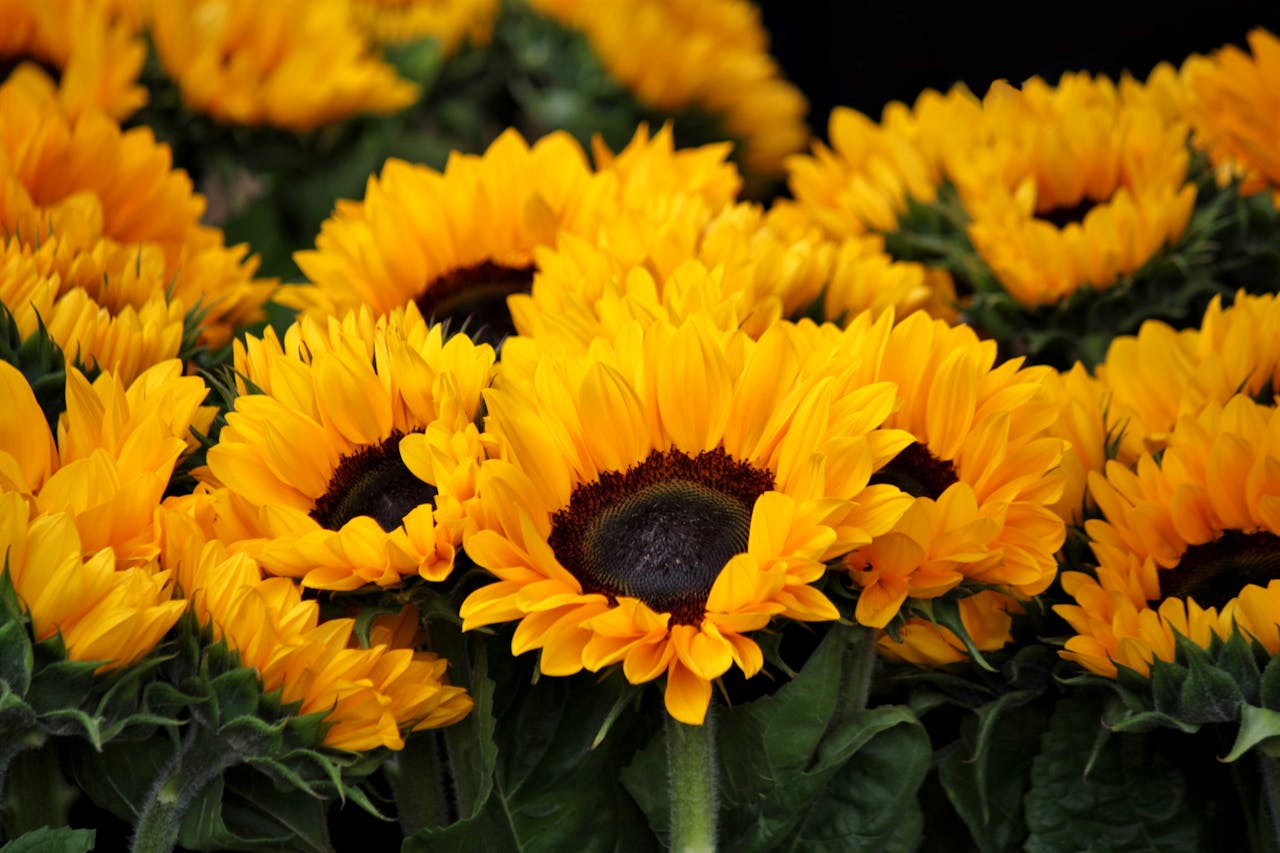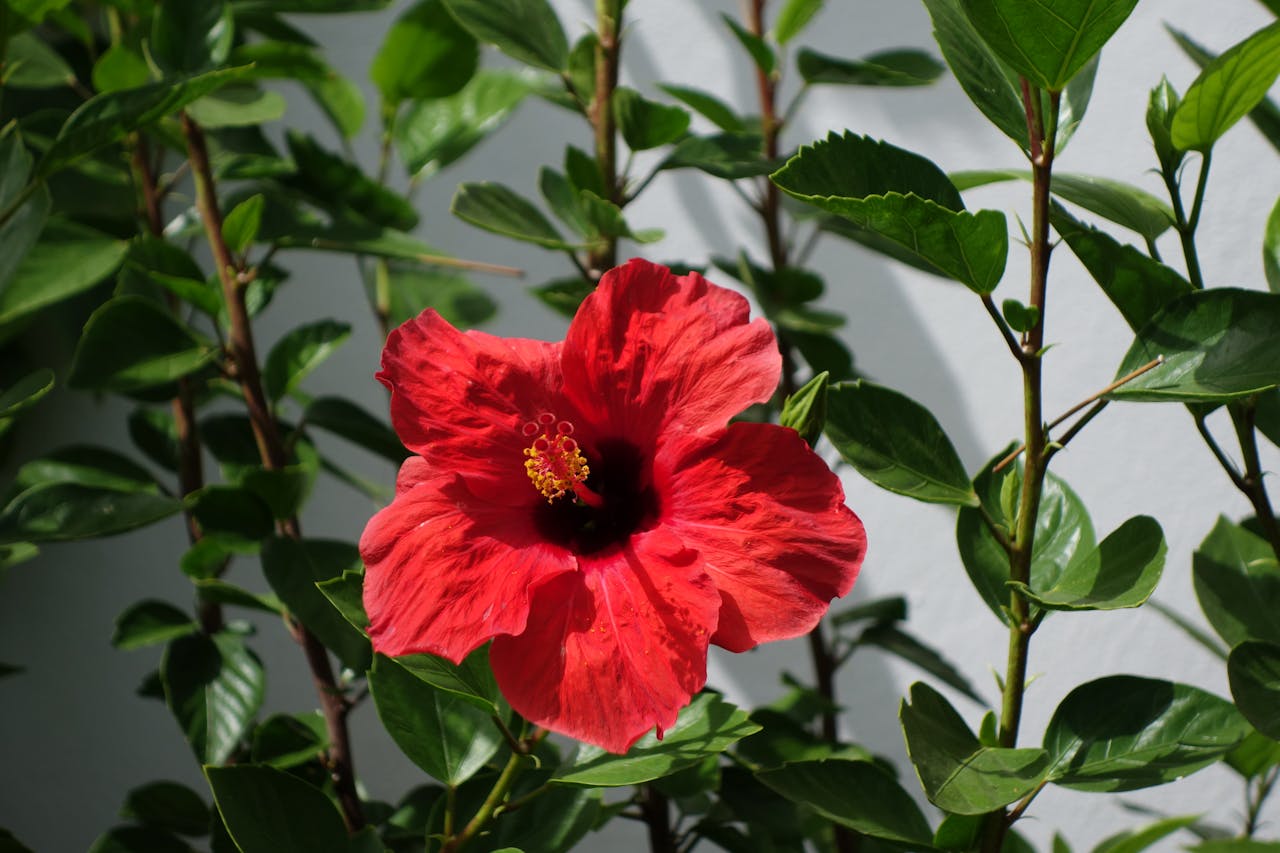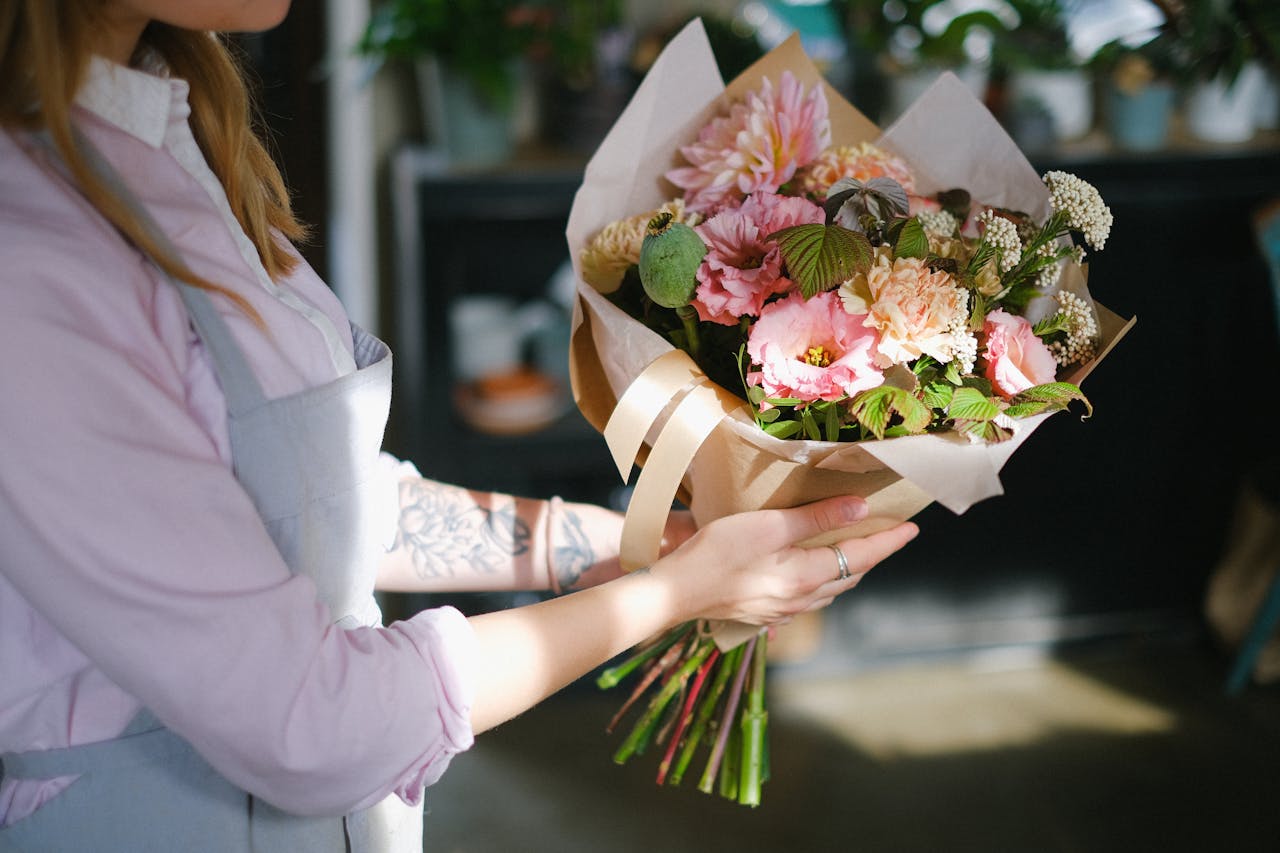
13 Sunflower Facts We Bet You Didn't Know
Bright, yellow, and brimming with sunny vibes, sunflowers never fail to bring a smile to someone's face. However, barely anyone knows what more these joyful flowers bring to the table.
Check out these fascinating sunflower facts we've gathered for you in this journal entry - we bet you didn't know any of these until today. P.S. The last sunflower fact will shock you! Let's dive in.
13 Sunflower Facts We Bet You Didn’t Know
1. Not all sunflowers are yellow
You’d be surprised to know how many colours sunflowers have besides yellow. Depending on the sunflower variety, sunflowers come in orange, gold, red, pink, brown and bi-coloured. There are even white sunflowers! The one in the photo below is called the Coconut Ice sunflower, featuring a creamy white vanilla shade. Pretty cool.

2. Sunflowers follow the sun
Sunflowers are like tiny bursts of sunshine growing from the earth. When you gift someone sunflowers, it’s almost like giving them a piece of the sun itself!
Not only do they carry the word 'sun' in their name, but they also turn towards the sun as it moves across the sky. Have you ever wondered why they do that?
Research indicates that sunflowers exhibit an extraordinary behaviour known as heliotropism, thanks to their internal clocks, similar to those of humans, which are referred to as the circadian rhythm. This enables them to track the sun's movement to receive the most sunlight for photosynthesis.
However, only young sunflowers have this sun-tracking ability. Once a sunflower matures, it will mainly face east to attract pollinators like bees. The reason for this is fairly simple. Bees like warm flowers and the flowers facing the east are the warmest.
3. Sunflowers are native to North America
The wild sunflower is native to North America but was first commercially developed in Russia. However, the American Indians were the first to domesticate the plant into a single-headed variety with seeds in various colours.
Evidence suggests that sunflowers were cultivated by American Indians in present-day Arizona and New Mexico around 3000 BC, and some archaeologists believe they may have been domesticated before corn.
According to the University of Missouri, North Dakota is now the leading U.S. state for sunflower production.
4. Sunflowers are a food source

Sunflowers had multiple uses in early American agriculture. They were commonly milled for flour or meal production to make bread and cakes. Sunflower seeds were ground, roasted, cracked, and eaten whole as a snack or combined with other grains and nuts.
Some even mix sunflower meal with vegetables like beans, squash and corn. Furthermore, early Americans discovered sunflower oil could be extracted and used for cooking.
When Europeans first arrived in the U.S., they saw sunflowers mainly as decorative plants, not recognising their potential as a food crop - although Native Americans had been using them for food for thousands of years.
5. Sunflowers can self-pollinate

Once a sunflower blooms, it produces a sweet pollen mixture to attract bees and other pollinators. These pollinators carry the pollen to the stigma, where the pollen fertilises the egg, creating a new sunflower seed.
Interestingly, sunflowers are capable of self-pollination. In such cases, the stigma wraps around its own pollen to reproduce. The seeds resulting from self-pollination will grow into plants identical to the original sunflower.
6. The tallest sunflower was over 30 feet
The tallest sunflower ever recorded stood at an impressive 9.17 m (30 ft 1 in) and was grown by Hans-Peter Schiffer in Karst, Nordrhein Westfalen, Germany. Guinness World Records verified this feat on 28 August 2014, but Schiffer had achieved this remarkable feat three times even before 2014!
7. Each sunflower can produce up to 2000 seeds
Sunflower heads can contain up to 1,000 to 2,000 seeds, with the most common type used for snacking having a black-and-white striped pattern on the hull. Other types are edible but are typically used for sunflower oil.

8. Sunflower oil can reduce cholesterol levels
Speaking of sunflower oil, did you know that sunflower oil can help reduce cholesterol levels? According to the American Heart Association, incorporating sunflower oil into your diet can lower cholesterol and reduce the risk of heart disease and stroke as it’s rich in polyunsaturated fats. Sunflower oil also provides key nutrients like vitamin E, omega-6, and omega-3 fatty acids.
9. Pollenless sunflowers
Believe it or not, some sunflowers don't produce pollen. Pollination is essential for plant reproduction, and sunflowers are no exception. However, sunflowers with pollen have a shorter vase life when used in cut-flower arrangements, and they have the potential to drop pollen, posing a threat to tablecloths and furniture.

In 1986, the global seed purveyor and plant breeder Sakata Seed, based in Yokohama, Japan, introduced Sunbright, the first pollenless ornamental sunflower. This groundbreaking advancement showed improvements in the sunflower’s lifespan. Plus, because this sunflower is pollenless, it’s less allergenic and mess-free.
As a result, the demand for sunflowers skyrocketed in the 1990s, leading to the development of similar varieties by different companies.
10. Sunflowers in Greek mythology
The rose is often mentioned in love stories yet this one centres around the sunflower. In Greek mythology, the sunflower is connected to the story of Clytie, a water nymph deeply in love with Apollo, the God of the Sun. Her feelings for him were pure, yet unrequited.

Day after day, Clytie watched Apollo from afar, longing for her love to be returned. Consumed by her infatuation with the God of the Sun, she eventually transformed into a sunflower, bound to the ground, eternally following the sun, aka Apollo.
The sunflower’s eternal devotion to the sun is a poignant reminder of love and admiration, even in the face of unreciprocated feelings - a symbol of undying loyalty.
11. Sunflowers are given on the third wedding anniversary
Sunflowers aren't just tokens of friendship or graduation gifts - they're also celebrated as symbols of everlasting love in third wedding anniversaries. Their strong stems symbolise the strength and resilience of a relationship, while their sunny petals embody the warmth and joy shared between lovers.
Rooted in Greek mythology, these blooms carry a deeper meaning, representing loyalty and unwavering devotion as they faithfully follow the sun's path across the sky, just as true love follows the light of the heart.
12. Teddy Bear Sunflowers

Sunflowers can be cuddly too like a cute huggable plushie! Meet Teddy Bear sunflowers. These blooms boast golden bushy petals and are spherical.
The bushy effect comes from the fact that Teddy Bear sunflowers have double blooms, resulting in a fluffy appearance. The Royal Horticultural Society honoured the sunflower with the Award of Garden Merit in 2015 due to its distinctive appearance.
Besides brightening floral arrangements, Teddy Bear sunflowers are edible, enhancing your culinary creations! Their fluffy petals add a delightful touch to salads or cakes, and their seeds can be enjoyed as a nutritious snack.
13. Sunflowers can absorb toxins and radiation
Sunflowers are powerful phytoremediators, capable of absorbing toxic metals and radiation from the soil while preserving the surrounding ecosystems. They’re also hyper-accumulators, which means they can clean up heavy metals and other toxins more effectively thanks to their large size.

This makes sunflowers a natural and less invasive solution for restoring contaminated soil to health, making them invaluable agents of environmental restoration. Following the nuclear disasters in Chernobyl and Fukushima, fields of sunflowers were planted to soak up harmful radiation then they were harvested and safely disposed of through pyrolysis.
Summary
In conclusion, sunflowers are beyond just flowers to beautify your garden and home. From their role as a reliable food source to environmental restoration, these vibrant blooms offer more than meets the eye.
Why not bring some of that sunshine into your life? Explore our sunny collection of sunflower arrangements and let these golden wonders brighten your home or someone’s day!
Love flower facts like this one? Check out our Flower Journal for more. We also share flower facts, tips, and other useful floral tidbits on our social media at @lunafloral.my. For enquiries, contact our team here or via WhatsApp at +60149134145.



